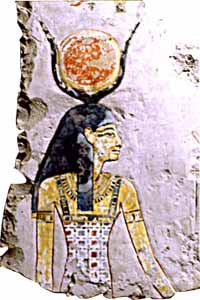Joseph Campbell in the late 1970s (Wikipedia).
This is the first essay in a series on the failure of leading 20th century mythologists to uncover significant antecedents of the religions they studied. The second addresses Raimon Panikkar's Limitations, the third concerns the limitations of Carlos Castaneda, and the fourth essay considers the strengths and weaknesses of Mircea Eliade's work.
Dr. Alice C. Linsley
Joseph Campbell (1904-1987) was the most notable mythologist of the twentieth century and a prolific writer. His thought was influenced by the work of Carl Jung, James Joyce, and Heinrich Zimmer on Indian myths and Hindu philosophy.
I have read most of Joseph Campbell's books including The Masks of God: Occidental Mythology (1964); Myths to Live By (1972); Primitive Mythology (1987); and The Hero's Journey (1990). As an anthropologist with a strong background in philosophy, I appreciate his extensive cultural research and range of thought. The enduring power of myth and symbol is evident in what he has written. He makes significant connections between the religious traditions of the world and provides examples of how mythic themes and motifs are enacted ritually.
Campbell was attuned to the unification hopes of many intellectuals of his time, and he hoped that his work might contribute to "human mutual understanding" (Introduction of The Hero's Journey). As Robert Ellwood notes in his book The Politics of Myth (1999), Campbell believed that ancient myths are a valuable resource for people "baffled by the ambiguities and superficiality of modern life".
In his book The Hero with a Thousand Faces (1949), Campbell discusses his theory of the journey of the archetypal hero common to most world mythologies. He called this the monomyth. Campbell does not offer a detailed explanation for how this emerges universally, but he suggests that it is deeply rooted in Mankind's collective unconscious (The Hero's Journey, p. 57). I propose that the universality is due to the wide dispersion of the early Hebrew ruler-priest caste that moved out of Africa well before 3000 BC and spread what might be called the "Proto-Gospel" wherever they settled.
Campbell delves into myths of Native Americans, Hinduism, Judaism, Islam, and animistic religions. He sometimes strays with seeming reluctance into the territory of the Roman Catholic faith in which he was raised, but never to elevate it above the other faiths. He stopped attending Mass as a communicant in his twenties.
Perhaps Campbell embraced the symbolism of Christ, the Immortal Hero, on his deathbed in a Catholic hospital. In an interview with his widow entitled "Campbell and Catholicism", the Catholic journalist Pythia Peay reports that Campbell "experienced profoundly the depths of the Christian symbol" during the last weeks of his life. She quotes his wife Jean Erdman as saying, "He was thrilled to see that [Christus Victor Cross] because for him this was the mystical meaning of Christ that reflected the state of at-one-ment with the Father. It had been through this image that he had come to a resolution the problem of his Catholic religion. While he didn't say it in so many words, "he was probably preparing himself for eternity." In the hospital, according to his wife, "he experienced emotionally what he had before understood intellectually."
However, Campbell did not receive the Last Rites and there was no formal religious service at his burial.
The Limits of Campbell's Exploration
Most of the myths that Campbell explored come from religions that emerged in the Axial Age (c. 900-200 BC): Hinduism (the Upanishads), Judaism, Buddhism, Jainism, Daoism (Taoism), the Mediterranean mystery cults, and Zoroastrianism.
Even his discussions of Nilotic myths involve the late syncretistic expressions of Egyptian imperialism. He does not explore the antecedents of the Ra-Horus-Hathor narrative among the early Horite Hebrew at Nekhen (4200 BC).
The core dogmas concerning the life-generating Spirit, God Father and God Son, including the Son's divine conception by overshadowing, his third day resurrection, his descent to the place of the dead to declare good tidings, and his co-substantial and co-equal nature with the Father were already held by the early Hebrew long before Judaism.
The Edenic Promise of Genesis 3:15 foretells how the Woman (not Eve) would bring forth a son who would crush the serpent's head and restore paradise. Psalm 91, recognized as a Messianic psalm, says, "You will tread on the lion and the adder; the young lion and the serpent you will trample underfoot." This early Hebrew expectation was expressed about 1000 years before Psalm 91:14 in the Ancient Pyramid Texts. "Horus has shattered (tbb, crushed) the mouth of the serpent with the sole of his foot (tbw)" (Utterance 388).As the sun was the symbol of the High God and his Son among the early Hebrew, divine appointment was expressed by overshadowing. When the Virgin Mary asked how she was to become the mother of the Messiah, the angel answered, "The Holy Spirit will come on you, and the power of the Most High will overshadow you. So the holy one to be born will be called the Son of God." (Luke 1:35)
Related Reading:
Why Joseph Campbell Left the Catholic Church | Fr. Dwight Longenecker (patheos.com)
The Impact of Mythologist Joseph Campbell ~ The Imaginative Conservative
Heretic of the week: Joseph Campbell - Catholic Herald
Joseph Campbell: 'Earth is in the heavens' | National Catholic Reporter (ncronline.org)
Joseph Campbell was once my hero – Catholic Heart and Mind
Campbell and the Deathbed Conversion - Joseph Campbell Foundation (coho-archive.org)


All the archetypes and mythological themes of Genesis 1-3 are found in Africa. https://jandyongenesis.blogspot.com/2023/12/the-roots-of-gospel-are-in-africa.html
ReplyDelete